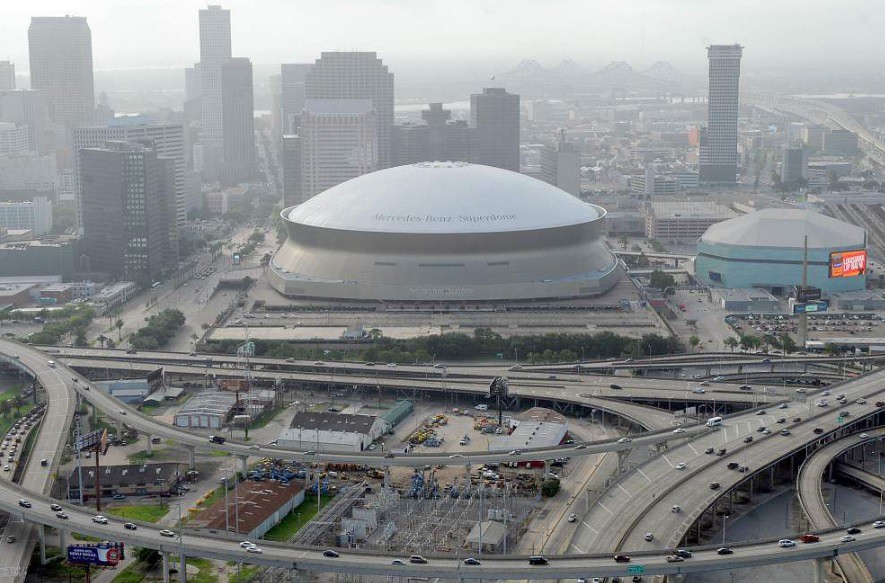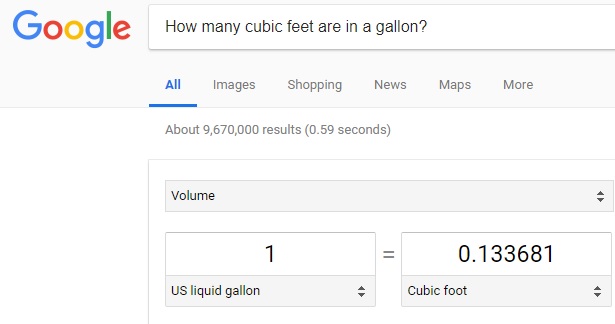Source: Axios
Hurricane Florence has arrived on the East Coast of the United States with a force which seems unparalleled compared to previous storms. The category has changed with time, though, without dispute, hurricane Florence is present and causing damage which will take years to recover from. To comprehend the predictions from weather forecasters, dimensional analysis is necessary to cast the enormous predictions into light. How much rain is going to fall on the East Coast from hurricane Florence? Here is an excerpt from a weather forecaster interviewed by 'Mashable' in an article titled "Hurricane Florence is forecast to dump a historic amount of rain. Here's how much" which states the huge amount of potential rain to be dropped:
Meteorologist Ryan Maue of WeatherModels tweeted some projections on Thursday morning.Maue's models suggest that around 17 trillion gallons of rain will fall across North Carolina, South Carolina, Virginia, and Georgia with some spots receiving as much as 30 inches of rain before Florence is finished.
According to the excerpt shown above, 17 trillion gallons is predicted to fall on North Carolina, South Carolina, Virginia, and Georgia over the next few days. This will cause terrible damage to the infrastructure in cities lining the coast and displace many thousands of residents from services (which are much needed) such as electricity, emergency services, and make returning to work nearly impossible. In order to understand the terrible destruction of the storm, the amount of rain (17 trillion) should be placed into context. In the paragraphs below, dimensional analysis is used to compare the amount of rain to the number of Mercedes-Benz Superdomes which could be filled with 17 trillion gallons.
How Much Space Occupies The Mercedes-Benz Superdome?
The metric which has been chosen to compare the enormous amount of rain that is expected to fall over the 4 states mentioned above on the East Coast over the next few days is the Mercedes-Benz Superdome. The Superdome is located in Louisianna and has an interior space (volume) equal to 125,000,000 cubic feet of space. Yes, I said 125,000,000 cubic feet of space as shown below:
Which fills the Superdome shown below:
Source: The Advocate
That is an large space indeed. Football games are played in the Superdome and at max capacity will hold a total of 73,000 people. Although, during a super bowl, the capacity has expanded beyond capacity to hold upwards of 79,000 people. Needless to say, when an HUGE volume is reported of liquid such as the amount of rain which will fall over the next few days, a perfect metric to compare is that of the Mercedes-Benz Superdome.
According to the excerpt taken from the news, the amount of rain expected to fall is 17 trillion gallons. First, lets look at the amount of zero's after 17 -- trillion. If 'Wikipedia' is consulted for the page defining 'trillion', the following definition is shown below:
Trillion (short scale) (1,000,000,000,000; one million million; 1012; SI prefix: tera-), the current meaning in both American and British English.
Therefore, if the number 17 trillion is written out in entirety, the number would appear as follows:
The first line above shows 17 trillion in long form. For the purpose of shortening up a number to move around in calculations used in dimensional analysis, the value 17 trillion could be expressed in 'Scientific Notation' as shown in the second line above. Which makes writing and expressing the number much easier. Compared to writing out all of the unnecessary zero's involved.
Notice that the unit of measurement in which the amount of rain projected to fall are expressed in units of 'gallons'. Remember that the interior space of the Superdome is expressed in units of 'cubic feet'. Therefore, if the two numbers are going to be used in the same analysis (the purpose of the blog post), then a 'unit' conversion is necessary. For this blog post, I will arbitrarily use the units of 'cubic feet' as a comparison. We just as well could have converted over the units of 'cubic feet' to 'gallon's in order to compare the two values of interest (i.e. volume of Superdome and volume of rain).
In order to convert the units of measurement from 'gallon' to 'cubic feet', a conversion factor is needed. To simplify the search for a conversion factor, consult Google with the following question: How many cubic feet are in a gallon? The answer is shown below:
For every gallon, there are 0.133681 cubic feet. Written as a conversion factor, the unit conversion from gallon to cubic feet is shown below:
The answer to the conversion shows that 17 trillion gallons is equivalent to 2.3 trillion cubic feet. Which means that 17 trillion gallons of water is equivalent to 2.3 trillion cubic feet of water. Same volume, different units of measurement. Now that both values are in the same units of measurement -- 'cubic feet' -- a simple division of two values (total volume of rain divided by total volume of a single Superdome) yields the total number of Mercedes-Benz Superdomes which would be filled with 17 trillion gallons of rain:
The answer indicates that if 17 trillion gallons were poured into 18,400 Superdomes, there would be no water remaining. Wow. With this enormous amount of Superdomes as a result, there should be no wonder why residents should be concerned about their health and safety. That enormous amount of rain will inevitably wreak havoc on the four states listed above.
Conclusion...
In the blog post above, the number of Mercedes-Benz Superdomes were calculated which would be needed to hold a total volume of rain of 17 trillion gallons. At this moment, you may be wondering how 17 trillion gallons compares to the amount of rain that Hurricane Harvey dropped on Houston (Texas). Hurricane Harvey dropped 58.3 billion cubic feet of rain. That is enough to fill 560 Dallas Cowboy Stadiums. Note that the total amount of rain is distributed across very different amounts of land masses. Different amounts of rain across different proportions of land. Still, these hurricanes are dropping enormous amounts of water (in the form of rain) which is wreaking havoc on the surrounding land.
Hopefully, the blog post above along with other dimensional analysis blogs on this site shed light on the severity of storms hitting the world over the past two years. In the index of blogs below, other storms have been analyzed in a similar fashion. Regardless of the size of the storm, any loss of life is tragic and unacceptable. Please keep the residents of hurricane Florence in your thoughts over the next few days (and months). If you are in the path of hurricane Florence, stay safe please.
Related Blog Posts:
Hurricane Harvey Drops Enough Rain On Houston To Fill 560 Dallas Cowboy Stadiums
How Much Water Is Contained In All Oceans Around The Globe?
Storm Raises Water Level In Lake Cachuma By 31 feet, How Much Water Is That?
How To Make Sense Of Water Flowing At 100,000 Cubic Feet Per Second
Can 11 Trillion Gallons Of Water Fill 14,000 Dallas Cowboys Stadiums?
How Much Rain Did The East Coast Receive From Hurricane Matthew?
How Much Rain Did Haiti Really Receive?
How Big Was The "Water Bomb" Of Rainfall In Macedonia?
How Much Rain Did Elliot City (Maryland) Really Receive?
If The Mosul Dam Breaks, The City Of Mosul Would Be Under 65 Feet Of Water?
What is the volume of water in a few inches of rain?
Volume of Waste in the Mine Spill (in Brazil) Equivalent to 78 Deepwater Horizon Oil Spills







No comments:
Post a Comment